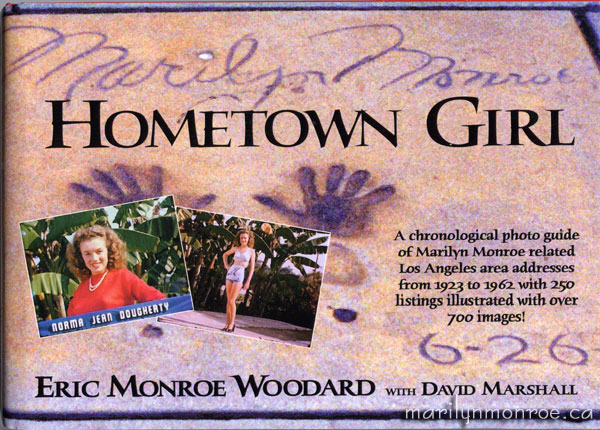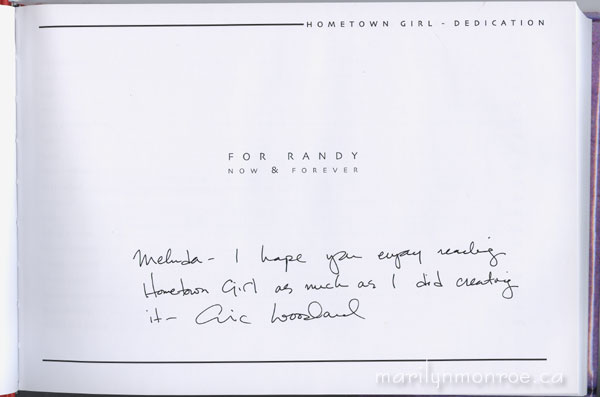 |
Great book! It is gorgeous to look at and features very unique content. I would recommend picking up a copy especially if you are planning a trip to see the Marilyn locations in LA. |
||||||||||||||||||
|
|||||||||||||||||||
| |||||||||||||||||||
|
BOOK REVIEW BY DAVID MARSHALL Yesterday was a very special day for me as I finally held in my hands an advanced copy of Eric Woodard’s Hometown Girl. After a year of looking at the book as it went through its many alterations, viewing images via email, CD Disc and finally hardcopy galley proofs, to actually hold the completed project was a considerable thrill. And not just because I know the author and was able to watch the book through its various stages, not just because I loved the book from the very beginning, but because the final product not only matches the image I had in my head but surpasses it. The book is once and for all a class act from the first page to the very last. The colors are vibrant. The paper is of the highest glossy quality. And the research -- an amazing feat in itself. As Eric mentions in his introduction, “most people don’t understand when I try to explain what Hometown Girl is all about. But then again, this book isn’t for them. It is for those fans like myself who have an obsessive need to know the minutest tidbit of information about, to us at least, one of the few iconic symbols of the twentieth century and beyond.” The text on the cover pretty much explains the concept of the book: “A chronological guide of Marilyn Monroe related Los Angeles area addresses from 1923 to 1962 with 250 listings illustrated with over 700 images.” What the cover doesn’t tell you is that the visual images leap off the page to grab the reader and pull them deep into a world that for the most part is no longer: the world of Marilyn Monroe. One of the reasons why the book is so compelling is that this is not a presentation of photo after photo but a near 200 page collage created by a foremost graphic artist -- Mr. Eric Woodard. And this is where the book’s major attraction lies, in its successful attempt to take the reader on a visually exciting time journey through the very world that Marilyn inhabited. In the hands of any other author the information would be welcomed but in no way could it have been presented in such a dazzling manner. The book can be enjoyed in three distinct ways:
That’s the joy of this book: to see Los Angeles as it she saw it. Any book that can tell me on which corner to stand and then describe the famous Schwab’s Pharmacy to the point where I can actually see Sidney Skolsky rather than the Crunch Gym and Virgin Records that stand there today, is more than okay with me. It is a treasure to hold onto and retreat into whenever the spirit moves me. |
|||||||||||||||||||

